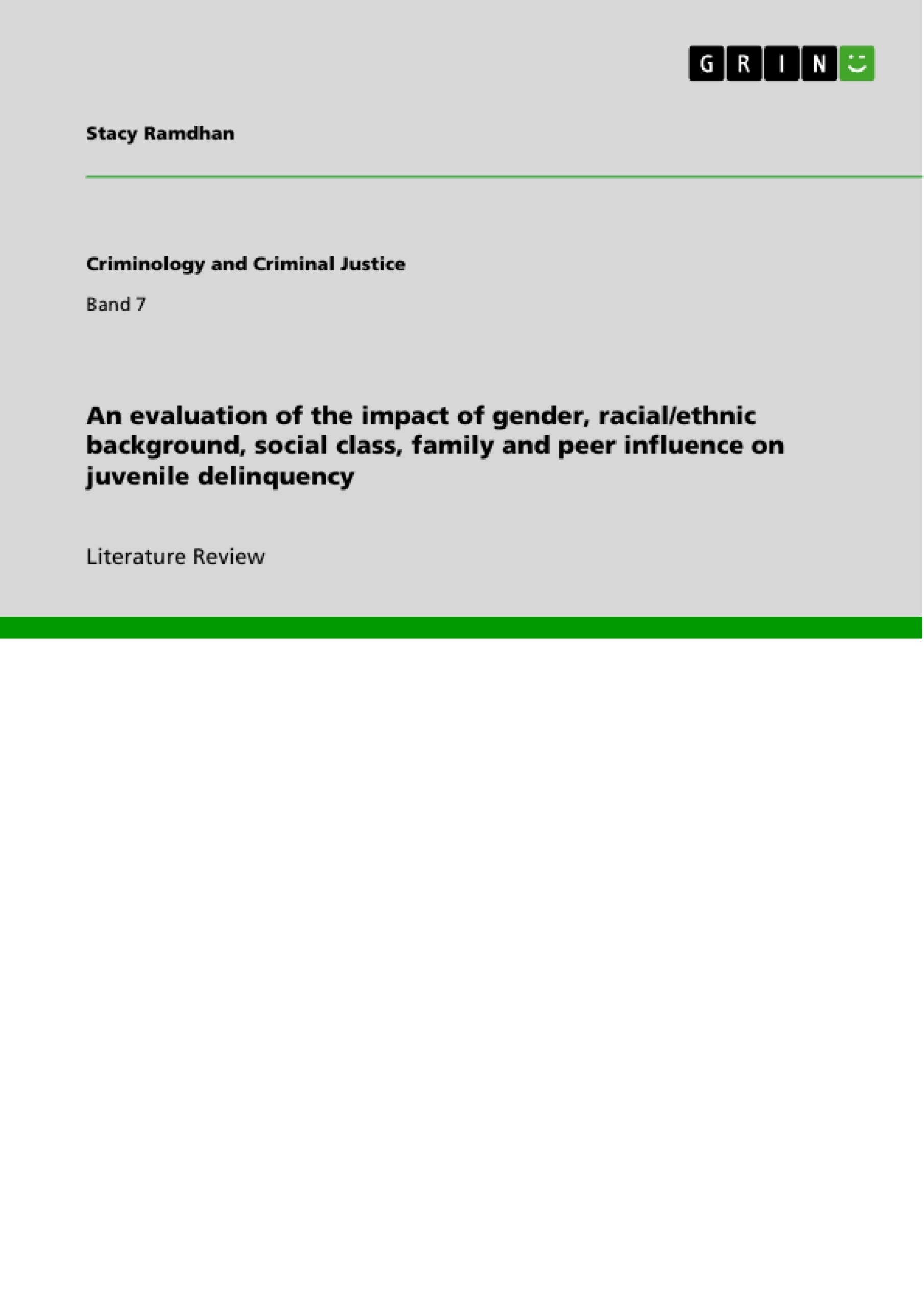The increase in criminal behavior among the youth population in Trinidad and Tobago has been of national concern for some time. Reports of serious crime – murder, attack with a weapon, rape, larceny, kidnapping - allegedly committed by school students and reported in the press, have given rise to great concern and stimulated resultant explanations from lay persons and policy makers alike. The reasons for and the appropriate methods of dealing with this relatively new phenomenon in the Trinidad context, have abounded and are discussed in various public fora. However, this upsurge has given rise to what are the causal factors for the extent and forms of delinquency. The dynamics of gender, race, social class, family and peer influence will be examine to demonstrate how they are related to the upsurge in delinquency and criminal activities in this youth section of the population.
Inhaltsverzeichnis (Table of Contents)
- Aims
- Objectives/Purpose of the Thesis
- Statement of the Problem
- Literature Review:
- Introduction (Definitions)
- Juvenile Delinquency
- Gender
- Race
- Social Class
- Family
- Peer
- Main Findings/Arguments of Authors
- Gender-delinquency relation
- Race/ethnicity delinquency relation
- Social Class-delinquency relation
- Family- delinquency relation
- Peer-delinquency relation
- Conclusion
- Bibliography
Zielsetzung und Themenschwerpunkte (Objectives and Key Themes)
This research aims to understand the factors contributing to school violence and juvenile delinquency in the Penal/Debe region of Trinidad, focusing on the experiences of children and young people. It seeks to construct a theoretical framework for understanding the surge in crime within this youth population by examining the dynamics of race, gender, social class, family factors, and peer influence.
- Exploring the impact of gender, race, social class, family, and peer influence on juvenile delinquency.
- Investigating the experiences and perceptions of students in the Penal/Debe region regarding violence.
- Identifying the root causes, consequences, and outcomes of youth engagement in violence.
- Proposing policies and recommendations to address the root causes of school violence and delinquency.
- Developing strategies to strengthen student protection, school, families, and community involvement.
Zusammenfassung der Kapitel (Chapter Summaries)
- Introduction: This chapter defines key terms, including violence, crime, juvenile delinquency, and related concepts. It explores various definitions and perspectives on these concepts, drawing from international organizations and relevant literature.
- Juvenile Delinquency: This chapter delves into the definition of juvenile delinquency, examining various perspectives and legal frameworks. It discusses the challenges of defining delinquency and the complexities of addressing juvenile crime.
- Gender: This chapter analyzes the relationship between gender and juvenile delinquency, exploring the gendered dynamics of crime and the impact of gender roles on youth behavior.
- Race: This chapter investigates the impact of racial and ethnic background on juvenile delinquency. It examines the intersectionality of race and other factors, such as social class and family influence.
- Social Class: This chapter explores the link between social class and juvenile delinquency. It examines the influence of socioeconomic factors on youth behavior and the role of poverty, deprivation, and inequality in shaping delinquency rates.
- Family: This chapter explores the influence of family factors on juvenile delinquency. It examines the impact of family structure, parenting styles, and family dynamics on youth behavior and their likelihood of engaging in delinquent activities.
- Peer: This chapter investigates the influence of peer groups on juvenile delinquency. It explores the role of peer pressure, gang involvement, and social networks in shaping youth behavior and contributing to delinquency.
Schlüsselwörter (Keywords)
Key terms and concepts explored in this work include: juvenile delinquency, school violence, gender, race, social class, family influence, peer influence, Trinidad and Tobago, Penal/Debe region, youth experiences, crime prevention, policy recommendations.
- Citation du texte
- BSc, MSc Stacy Ramdhan (Auteur), 2011, An evaluation of the impact of gender, racial/ethnic background, social class, family and peer influence on juvenile delinquency , Munich, GRIN Verlag, https://www.grin.com/document/175695



